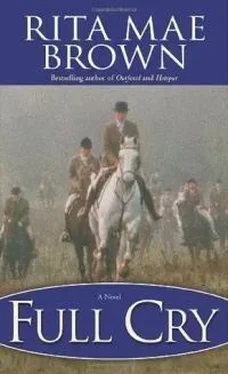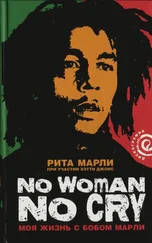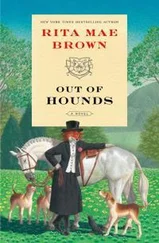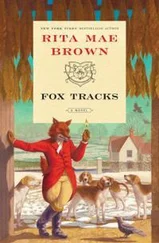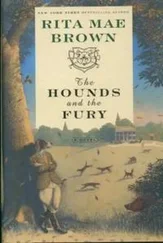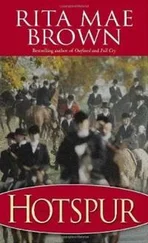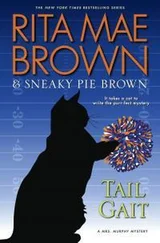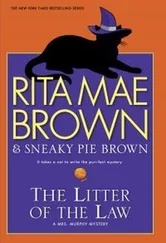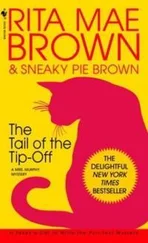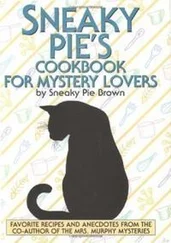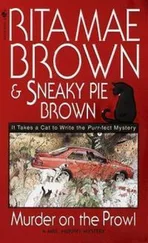The others followed suit, touching one another’s mugs.
CHAPTER 6
Thursday morning, New Year’s Day, when Sister awoke at her accustomed five-thirty, a low cloud cover hinted more snow was on the way. Darkness enveloped the farm. The thermometer outside Sister’s bedroom window read thirty-six degrees Fahrenheit.
When the sun rose two hours later, the cloud cover remained. This was going to be an interesting day: the ground was hard, icy in spots, and the snow hard packed to about a foot and a half. Sister could smell more moisture coming.
In the winter most Virginia hunts meet at ten. As the earth tipped her axis and more light floods the rolling pastures and woodlands, that time is pushed up to nine, often by mid-February.
New Year’s Hunt, however, begins at eleven: a concession to the rigors of braiding and the struggle to sober up for many. The later time also allowed the earth to warm a bit more, though today’s cloud cover held in some warmth.
Later that morning, parked to the right of the covered bridge at Tedi and Edward Bancroft’s After All Farm, the hounds peered out of the party wagon. They saw some people blowing on fingers as they slipped on polished bridles, while others repaired unruly horse braids or tried for the umpteenth time to force their stock tie pin level across their bright white or ecru stock ties.
The most fashionable of hunters, and this was unrelated to wealth, wore a fourfold tie on formal hunting days. Occasionally, they might wear a shaped tie, but on the High Holy Days, one wouldn’t dream of anything but the fourfold tie. For one thing, it looked better. For another, it kept one’s neck warmer. These good features did not make the tie any easier to work with. Many a foxhunter expanded his or her vocabulary of abuse while fumbling.
The High Holy Days required members and horses to look their best. In the old days of hunting when agricultural labor, indeed all labor, was less costly, people came to every formal hunt with their horses’ manes braided. They usually came with two horses. Their groom kept the second horse at the ready to be switched halfway through the hunt. Then, also, many hunts enjoyed a brief repast while members switched horses. Those days had vanished.
Most foxhunters worked for a living. They prepared their horses themselves, and braiding sucked up time as well as patience. At the Jefferson Hunt Club, braiding was now required only for Opening Hunt, Thanksgiving Hunt, Christmas Hunt, and New Year’s Hunt. Many older hunt clubs wished their members to braid for a meet with another hunt, but few could enforce this. It was seen as a tip of the cap to the visiting hunt, a form of respect and welcome.
With the exception of Tedi, Edward, Sybil, Crawford, Marty, Sister, Betty, and Shaker, everyone present had braided their own horses. As master and huntsman, Sister and Shaker had Lafayette and Hojo braided by Jennifer Franklin, who also did her mother’s horse, Outlaw. Of course she held it over her mother. At seventeen Jennifer could be forgiven.
On New Year’s Hunt, Sister Jane wore her shadbelly: a black swallowtail coat, exactly as one sees in the nineteenth-century prints. The canary points of her vest peeked out underneath the front, perfectly proportioned. Her top hat glistened, the black cord fastened to the hook inside the coat collar in back. Her breeches, a thin buckskin, were much like what Washington himself wore when he hunted. Over the years they had softened to a warm patina: once canary, they were now almost buff.
For years, people could no longer find buckskin. Then Marion Maggiolo, proprietor of Horse Country in Warrenton, found someone in Europe to make them. One pair of breeches could last a lifetime, justifying the stiff price of six hundred and some odd dollars.
For Christmas, the members had all chipped in and bought Sister a new pair of buckskin breeches. Betty drove up with her to Warrenton to be properly fitted, and Sister couldn’t wait for their arrival.
Crawford, of course, flashed about in his impeccably cut scarlet weaselbelly. His properly scarlet hat cord, a devil to find these days, hung from his top hat, the crown of which was about a half inch higher than that worn by a lady. Both top hats slightly and gracefully curved into the brim. Like a red hat cord for a man, a lady’s proper top hat was a deuce to find. Given the difficulty in finding the real thing—it could take years—many women gave up, donning dressage top hats. No one was critical, and although they didn’t look quite as lovely, they still looked good.
Leather gloves were soft canary or butter. Along with leather gloves, a pair of string gloves were under the horse’s girth. These warm gloves helped riders keep the reins from slipping through their fingers if it rained or snowed. Then, if necessary, riders would tuck their leather gloves in their pocket or under their girth and pull out the string gloves, which were brilliant white or cream.
Men with colors wore boots with a tan top. The ladies with colors wore boots with a patent leather black top. Everyone else wore butcher boots, usually with the Spanish cut—meaning the outside part of the boot covering the calf was longer than the inside portion. Butcher boots had no tops. All boots were polished to such a feverish degree that one could see one’s reflection.
The spurs, hammerheads or Prince of Wales, also sparkled, even with cloud cover.
Fabulous as people looked—some wearing hunt caps, a few others in derbies, which were proper with frock coats—the horses trumped them all. Chestnuts gleamed like flame, and bays glowed with a rich patina. Seal brown horses and blood bays, not often seen, caught everyone’s eye. A blood bay is a deep red with black mane and tail. It’s a beautiful color, as is a flea-bitten gray or a dappled gray. A few of these were present, as well as some of those dark brown horses that appear black to the human eye.
Henry Xavier had mounted his paint, Picasso—a large warmblood—to account for his increasing weight. Dr. Walter Lungrun was so resplendent in his tails, black rather than scarlet, that women swooned when they beheld the blond doctor. He was on a new horse he’d purchased in the summer, Rocketman, a big-boned, old-fashioned thoroughbred bay with a zigzag streak down his nose. Clemson, Walter’s tried and true, went out with him on informal days.
The horses were bursting with excitement, for the morning was cool and they liked that. In many ways, they reflected their owners’ skill, status in the hunt field, and, in some cases, dreams. Hunt fields always have those members who are overmounted, members who want desperately to be dashing on a gorgeous horse. Usually they’re dashed to the ground. Sooner or later, such folks realize what kind of horse they truly need. Pretty is as pretty does. If not, they stalk away from foxhunting with grumbles about how dangerous it is and how stupid their horse is. It’s not the horse that’s stupid.
Hunting is dangerous. However, the adrenaline rush, the challenge, the overwhelming majesty of the sport, the sheer beauty of it get in a rider’s blood. Those who foxhunt can’t imagine living without it; even the danger adds spice.
Life itself is dangerous, but millions of Americans in the twenty-first century are so fearful of it that they retreat into cocoons of imagined safety. Small wonder obesity is a problem and psychologists are thriving.
Humans need some danger, need to get their blood up.
It was up at eleven. The field was large even with the cold. Seventy-one riders faced the master.
“Ladies and gentlemen, the hounds and I wish you a Happy New Year. We wish you health, prosperity, and laughter. May you take all your fences in style, may your foxes be straight-necked, and may your horse be one of your best friends.
Читать дальше
